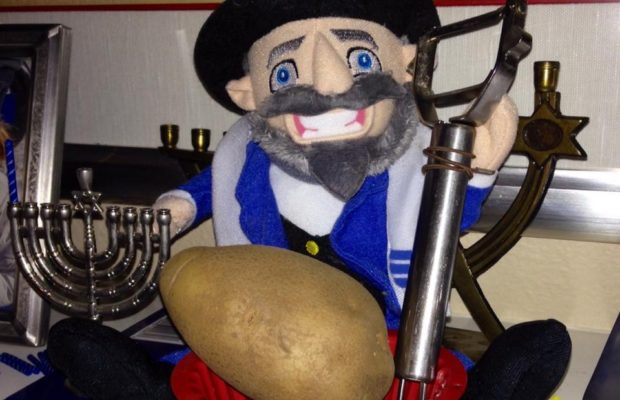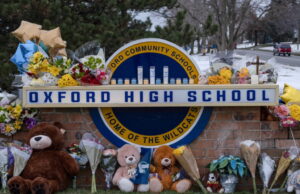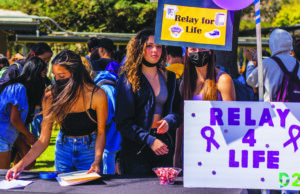Winter season brings diverse celebrations

Saint Lucia’s Day
As a part of her Swedish heritage, Josephine Duc, senior, celebrates St. Lucia’s Day, a holiday that honors St. Lucia, a Christian martyr. Although St. Lucia’s day is a Swedish tradition, St. Lucia was actually a Roman woman who was killed in the year 304 A.D. during the Roman persecution of Christians. Although much of her history is lost, it is known that she valiantly donated her time to serve others. “We celebrate the saint on December 13th, and people celebrate the idea of bringing food and light to those who need it,” Duc said.
St. Lucia’s Day is traditionally celebrated with candle crowns. These candles are meant to bring hope and light to the cold, Scandanavian winter. Additionally, St. Lucia wore a candle crown when she cared for others. “She brings light throughout the world of darkness, both with her candle crown and with her kindness,” Duc said.
However, there is another aspect of the holiday that cannot be forgotten: the food. Traditionally, families celebrate St. Lucia’s Day by enjoying coffee and baked goods, such as saffron bread and ginger biscuits, with other members of the family. “We make gingerbread cookies from scratch and lots of Lusse bullar, which are shaped like an S with raisins in them,” Duc said. “All of the food we eat is connected to either wintertime, Christmas, Lucia, or Swedish culture.”
Three Kings Day
“Before Elf on the Shelf, my parents used a little bird called Pifa Pifita to watch over us,” Aitana Sierra-Valdez, senior, said. The bird figure disappears and reappears periodically throughout the holiday season.
“On Christmas morning, (Pifa Pifita would) be there with her baby. We still do it because the ornament is super pretty but I still don’t know the secret of Pifa,” Sierra-Valdez said. Her family consists of her parents and her younger sister who is a freshman.
“Pifa is also in charge of delivering your list to Santa when you’re done. You just put it on the tree and it’s gone the next morning,” Sierra-Valdez said. The bird is white with a festive red scarf, hat and beak.
“Pifa would also visit us after Christmas for Three Kings Day, January sixth, then she would return to the North Pole until next Christmas,” Sierra-Valdez said. Also known as Epiphany, Three Kings Day is a Christian holiday that marks the day when the gift-bearing three kings met baby Jesus.
“Three Kings Day is like a mini Christmas where you get shoes and clothes instead of toys or fancy gifts,” Sierra-Valdez said. The holiday is typically celebrated in Spain and Latin America.
“Most of my family on my dad’s side is from Spain, my mom’s side is more native or Latina,” Sierra-Valdez said. Her father brought the family tradition of Pifa Pifita to the Sierra-Valdez family, and she hopes to continue it.
Hanukkah
“Hanukkah is the celebration of when the oil in a destroyed temple lasted for eight nights when it should have only lasted one,” Rachel Goldstein said. Rachel’s family is one of many Jewish families in the community who are celebrating the holiday. The holiday occurs different days every year since it is based off of the Jewish Lunar calendar, being from Dec.22-30 this year.
During Hanukkah, many delicacies cooked in oil (representing the candle oil that lasted eight days) are enjoyed, like latkes, or potato pancakes. “You say the prayers over the candles and eat lots of good food, like most Jewish holidays, and it’s customary to give gifts to your family and friends,” said Goldstein.
It is also common to play a game of dreidel where people spin a top and try to win coins. There are four sides to the dreidel, “Nun,” “Gimel,” “Hey” and “Shin,” and whichever one faces up after the dreidel is spun tells each player how much to give or take from the “pot” in the center. Overall, the four letters mean “Nes gadol haya sham,” meaning a great miracle happened there, referring to the temple.
While there is an up and coming popularity around the Christmas tradition of Elf on The shelf, an elf that watches kids if they are good or bad and reports to Santa, Hanukkah has its own unique version of this. “My family has a Mensch on a Bench, it’s like a Jewish Elf on the
Shelf, we put that out every year,” said Goldstein. A Mensch is a person who is relied on for his or her integrity and honor. According to the stories, Moshe the Mensch (The Mensch on a Bench) was in the temple with Judah the Maccabees when they won the war against the Greeks. He now brings joy to families globally and watches over the menorah.
One important centerpiece of Hanukkah is the menorah, which consists of nine candles, four on each side of the center candle, called the shamash. Each of the eight candles represents one of the eight nights that the miraculous candle burned in the temple. The shamash is used to light each candle for every night of the holiday.
Dutch Christmas
Kamden De Ruyter, sophomore, celebrates a unique version of Christmas compared to the American Version: Dutch Christmas. Celebrated on the fifth of December, which is Saint Nicholas’s Eve, Dutch families, including De Ruyter’s, wait for Sinterklaas (Santa Claus) to bring them presents. “We put out wooden shoes, and then the next day, he comes in, they’re full of chocolates and stuff,” said De Ruyter.
Families also eat traditional Dutch desserts during the holiday like the stroopwafel. “You can find them at Trader Joe’s, they’re extremely good. It’s basically two wafers with caramel in between,” De Ruyter said. “They (also) make cookies in the shape of windmills and they’re not necessarily less sweet but more like flavorful.”
This holiday also has its own unique traditions and folklore. Dutch children are told about Santa’s helpers called “Zwarte Pieten”. As the tale goes, Sinterklaas and Zwarte Pieten arrive in a steam boat at the port of Rotterdam and leave presents for good children. They put treats in dutch wooden shoes, or clogs, that children put by the window.
Diwali
Another holiday celebrated by many people all over the world is Diwali. Diwali is an Indian holiday, loosely translated as the “Festival of Lights.” Diwali is celebrated differently depending on the part of India. Annika Kanugo, sophomore, celebrates it with the South Indian custom. “[Diwali] celebrates the defeat of the demon king,” Kanugo said.
Diwali is often celebrated with firecrackers, symbolic of the name of the festival. Many people also go to temple to worship and eat a big meal with family around the table. “My favorite part is getting to eat food and spend time with friends and family,” Kanugo said
Diwali is also a very personal holiday, so different families engage in various activities.
For Kanugo and her family, they tend to stay in. “We have our own ceremony in our house to worship the gods,” Kanugo said. “And we have a big dinner afterwards.”
Every year, a Diwali party is held for all the Indians in the community. Although it was on Nov. 9, over two weeks after the actual holiday, it was still successful and enjoyable. “The Diwali party is held in Dos Vientos and has performances and food and entertainment. Everyone dresses up and it’s a lot of fun,” Kanugo says. This event was one of many across the globe to celebrate a special holiday cherished by the Indian culture.



